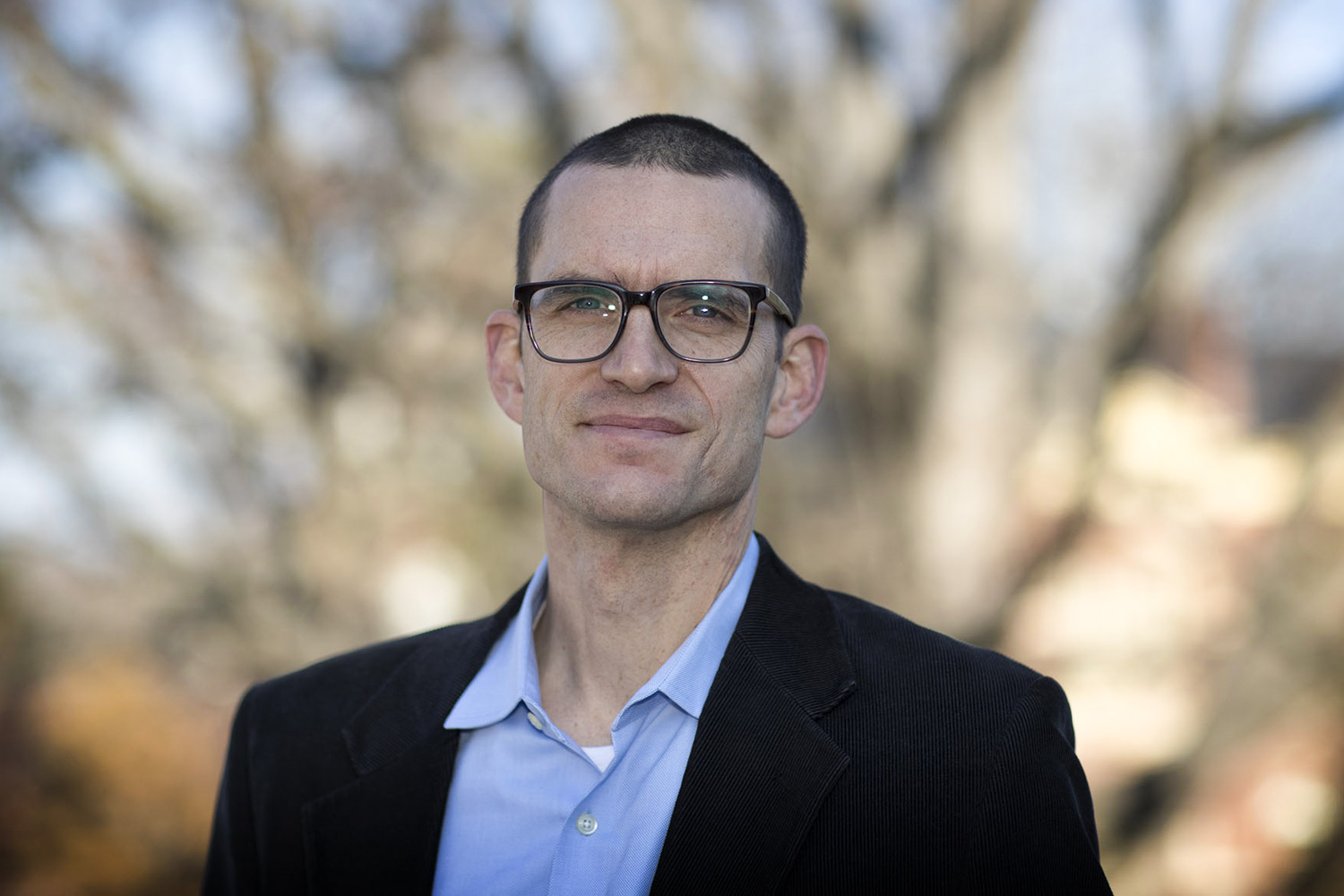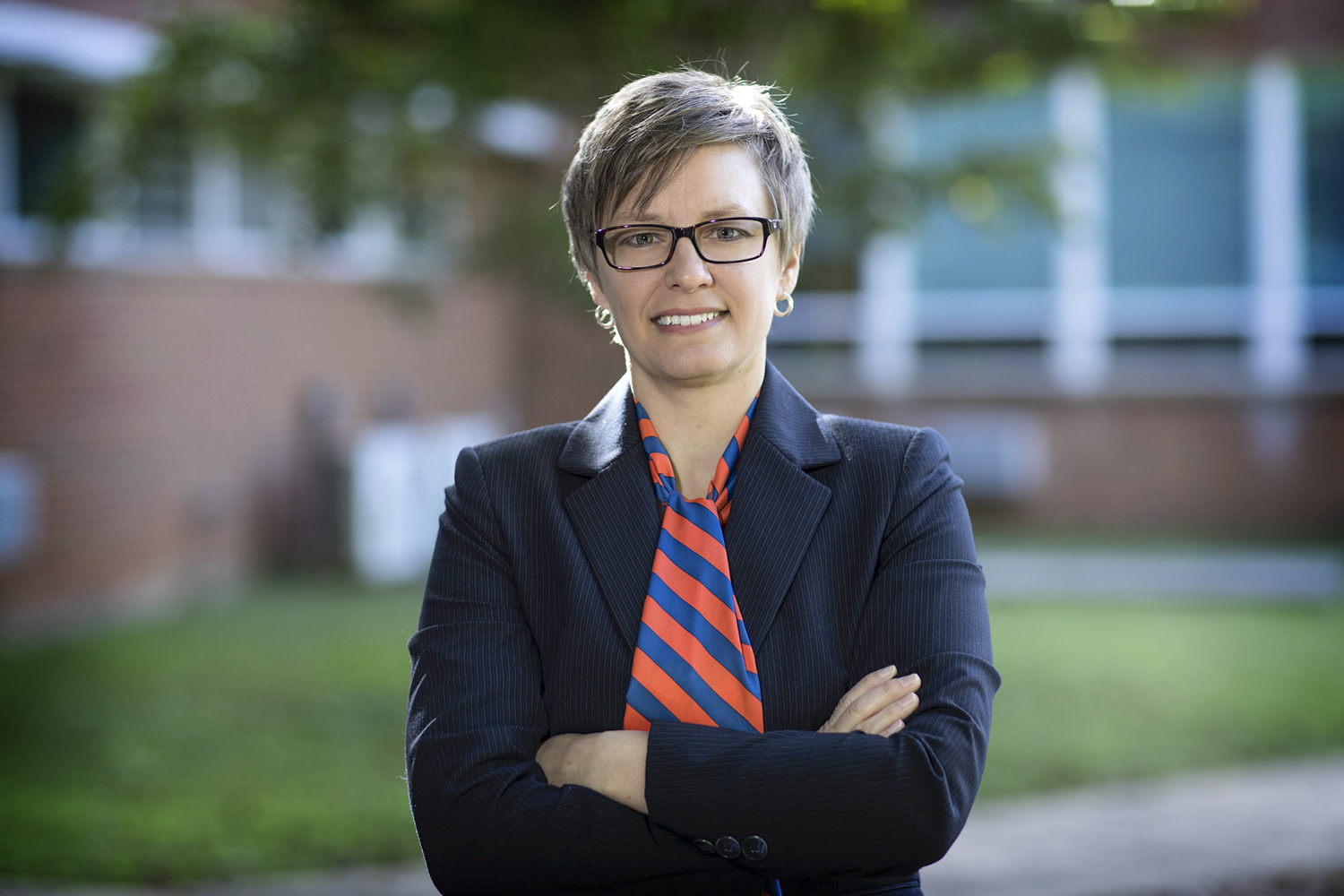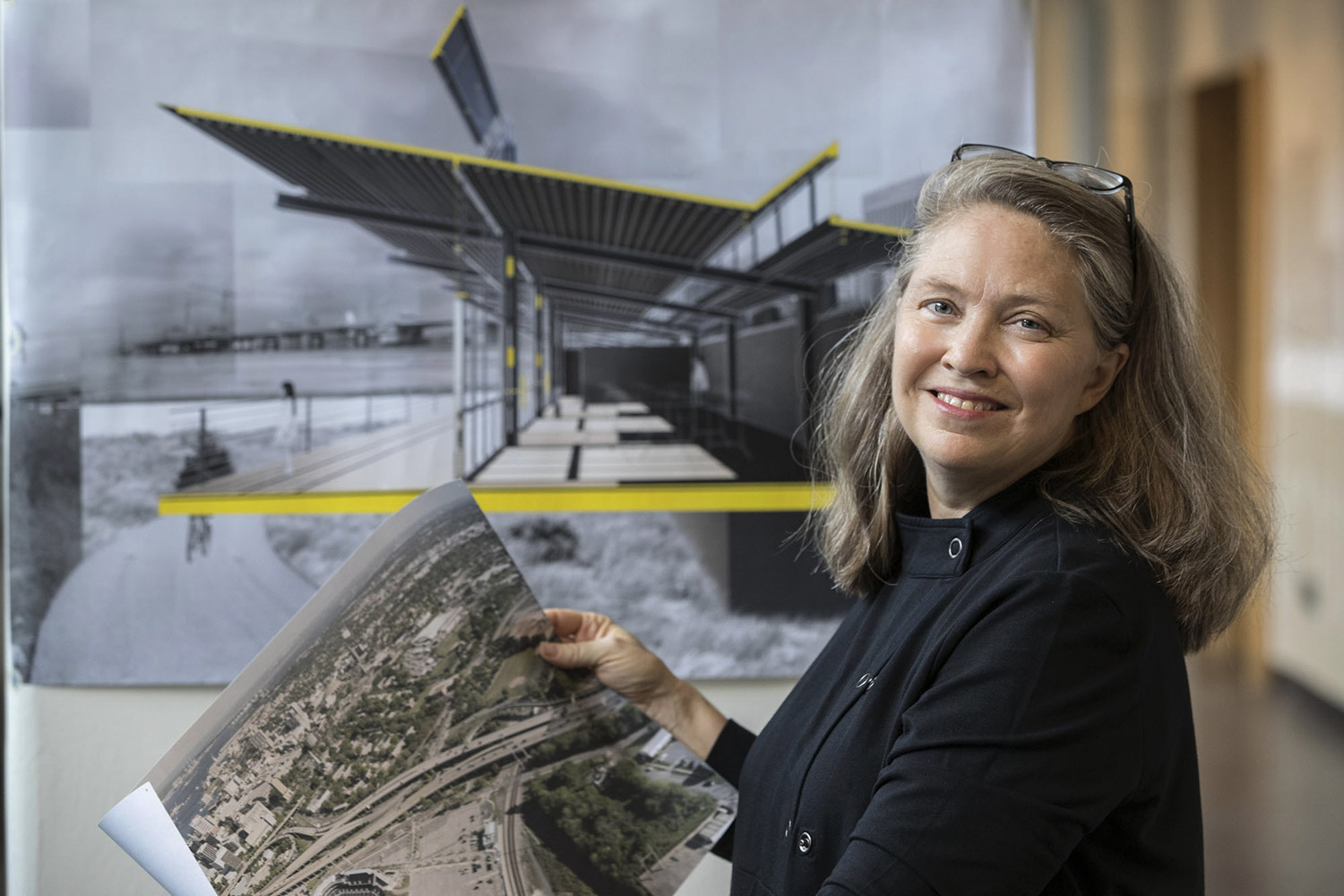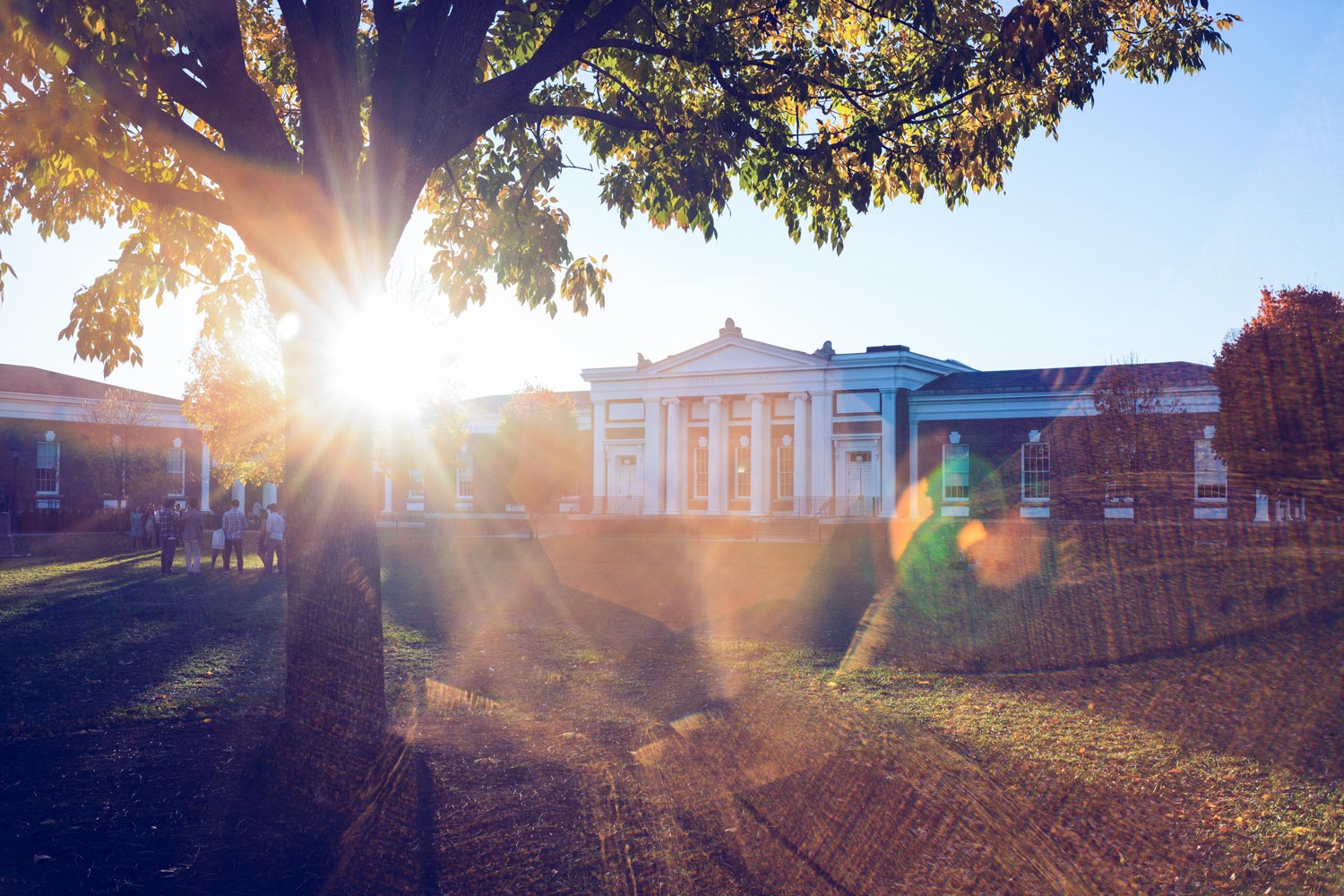Sustainable concepts can be applied to many disciplines, and the University of Virginia is expanding its class offerings to include six new interdisciplinary courses in the spring.
The new courses are in keeping with the University’s Sustainability Plan, introduced in 2016, which calls for UVA to integrate sustainability into the operations, research and curriculum of the University, so the Grounds become a learning tool.
The new courses being offered are:
- “Sustainability Science,” with civil and environmental engineering professor Teresa Culver;
- “Corporate Resilience & Sustainability in Changing Times,” with McIntire School of Commerce professor Kerrie Carfagno;
- “Natural Resources and Environmental Sustainability,” with environmental sciences professor Thomas Smith;
- “Smart Cities Enabling Sustainability,” with School of Continuing and Professional Studies professor Angela Orebaugh;
- “Sustainable Environments: Middle East and South Asia,” with Middle Eastern and South Asian languages and cultures professor Tessa Farmer; and
- “The Ethics of Food” with religious studies professor Willis Jenkins.
In fall 2018, Phoebe Crisman, from the School of Architecture, will teach a redesigned “Global Sustainability” course, while Brian Richter, who teaches urban and environmental planning, and Bill Reifenberger, from media studies, will co-teach a spring 2019 course on “Water Sustainability,” which will focus on sustainable water use practices in cities, industries and on farms, as well as leaving water for nature.
The Committee on Sustainability, which oversees implementing the sustainability plan, has funded the development of the six spring courses at $8,000 per course, with money allocated by the Board of Visitors.

Religious studies professor Willis Jenkins will teach “The Ethics of Food” this spring. (Photo by Dan Addison, University Communications)
“The plan is designed to enhance the environmental management of the University, not just in its operation, but in its teaching and research,” said Bill Shobe, professor of public policy at the Frank S. Batten School of Leadership and Public Policy and a member of the Sustainability Committee’s subcommittee on teaching and research, which reviewed the proposals.
The teaching and research subcommittee requested proposals for courses that addressed various aspects of sustainability. The subcommittee received 18 proposals, of which it funded eight – six for this spring and two to be taught later.
“We were looking for classes that would expand the range of our programs and that students would find challenging and invigorating,” Shobe said. “We wanted faculty with good teaching skills and classes that would add to the available course selections.”
“We are offering classes that will help prepare them for careers,” Shobe said. “In each case, we are expanding the anticipated audience, getting students to think of environmental management as a career path.”
Culver, who is teaching “Sustainability Science,” sees sustainability as an essential element of civil and environmental engineering and an aspect of every course she teaches.
“Our department is working on infrastructure management for sea-level rise, smart stormwater systems that can adapt to changing conditions, driverless vehicles that will revolutionize our transportation systems, carbon dioxide management, integrating waste treatment and energy production and providing safe drinking water to the world, to name a few,” she said.
Culver said her course will highlight sustainability challenges and seek to motivate the students.
“To understand sustainability scientifically may require training in a broad swath of sciences: biology, ecology, chemistry, physics, hydrology, atmospheric science, etc.,” she wrote in an email. “Most students will not have the opportunity to take a course in each of these subjects. This new first-year course, with its just-in-time approach to the scientific underpinnings of the challenge of sustainability, will be an effective and interesting way to learn the science, all with a focus on sustainability, breaking traditional ways of ‘siloing’ scientific disciplines.”
Culver said students who complete her course can become innovative thinkers with respect to sustainable technology.
“Given the confluence of mounting challenges to sustainability and the crumbling state of our infrastructure, we face a unique opportunity to replace our current infrastructure systems with more sustainable, resilient systems,” she said.

School of Continuing and Professional Studies professor Angela Orebaugh’s course will focus on the effects of smart technologies in cities. (Photo by Dan Addison, University Communications)
Orebaugh is also addressing infrastructure, but in a different way, in her course on sustainability and “smart cities.” Orebaugh, director of cybersecurity and information technology programs at the School of Continuing and Professional Studies, said there is a growing interest in smart cities and a demand for technical and sustainable skillsets in the workforce.
“Sustainability is merging with technology in many areas, including ‘the Internet of Things’ and the smart, embedded devices implemented in smart cities,” she said. “Smart technology enables cleaner, healthier cities with lower emissions by creating efficiencies in transportation, energy generation, waste management and many other areas.”
Orebaugh already teaches about cybersecurity and the Internet of Things, focusing on the security of technology and consumer devices, many of which involve aspects of sustainability. She wants students to learn about the major challenges facing cities, the innovative technology that could create solutions and the lessons learned from a variety of global smart city case studies.
“While this is a course with a technology focus, it all comes down to the impact on people,” she said. “People are affected by climate change, pollution, traffic congestion, power outages, waste and more. The ultimate goal of smart cities is to improve the lives of people by improving the impact cities have on the planet.”
The current generation of students are more socially and politically active and need to feel they are part of the solution, said Phoebe Crisman, an associate professor of architecture.

Architecture professor Phoebe Crisman directs UVA’s Global Studies: Environments & Sustainability program. (Photo by Dan Addison, University Communications)
Crisman directs the Global Studies: Environments & Sustainability program that prepares students to understand, innovate and lead efforts to sustainably transform the physical environment, as well as UVA’s minor in global sustainability. She said she often gets inquiries from high school students about the global sustainability major and minor programs.
“Most students are definitely more aware of sustainability from an environmental, social and political standpoint,” she said. “They have a growing concern with social equity and the income gap in the U.S. and globally. There is an intense desire on the part of many students to rethink how they can live more sustainably and to focus their efforts on making the world a better place.”
According to Crisman, three students graduated with a global sustainability minor in 2011, its first year. There were 48 in 2017.

“More than 1,350 students have taken the global sustainability course between its inception in spring 2009 and spring 2016,” she said. “Students enroll from every undergraduate school at UVA.”
The separate departments will evaluate the new sustainability classes, in part by enrollment, and determine if the courses will become part of the regular curriculum.
“If students don’t sign up, then we have missed our mark,” Shobe said. “There is always an element of risk with a new course. These aren’t required courses and they have to be challenging and attractive. Some classes don’t make it. You can’t always hit home runs.”
At least three of the courses filled up quickly and the others are experiencing strong student interest.
Media Contact
Article Information
December 15, 2017
/content/sustainability-makes-gains-uva-classrooms

